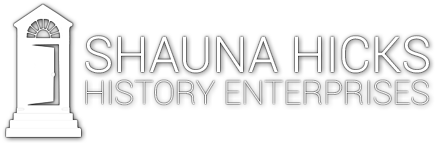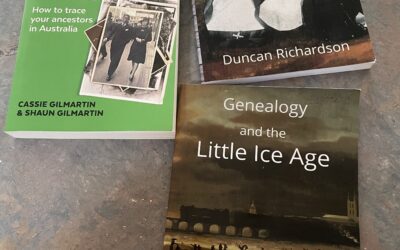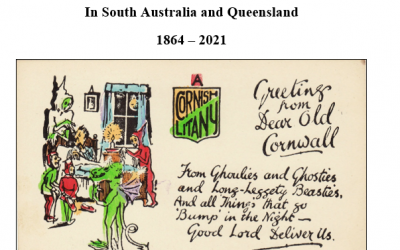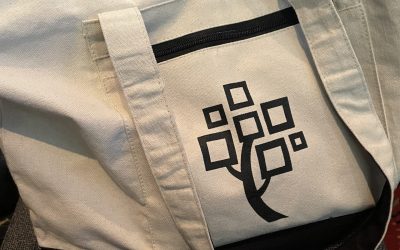Although National Family History Week is a national event in Australia, it is only launched in one place which is usually in Melbourne. This year I was honoured to be asked to do the launch and below is the text of my talk for those not able to personally attend the launch. It was a great afternoon and I’ll report more on it in my Diary of an Australian Genealogist soon.
It’s 35 years Since the TV Miniseries Roots!
Good afternoon everyone. I was both thrilled and honoured to be asked to launch this year’s National Family History Week. It is a particularly important occasion for me in that 2012 also marks the 35th anniversary of my own interest in family history. Yes my ex and I were two of those many people who sat down in July/August of 1977 to watch the TV miniseries Roots based on the controversial book of the same name by Alex Haley. I had no inkling that night that my whole life, including my career, was about to change and that 35 years later I would still be as passionate and involved with family history.
Alex Haley’s book Roots: The Saga of an American Family based on his own family history was published in 1976. The book, eventually published in 37 languages, had an impact not only in Australia but around the world, especially in the United States of America. It was adapted into the television miniseries in 1977 which was shown around the world, igniting a genealogy boom that I don’t think has ever really stopped. This is not surprising when it is claimed that the series was viewed by 130 million people. In 1979 it was followed by the sequel Roots: The Next Generation which I will also admit to watching.
However, it was only about ten years ago that I actually read the book, as I’m one of those people who, if I watch the movie or TV show first, don’t like to read the book and vice versa. Plus I had been dismayed by the criticism of his research and the copyright infringement claims and law suits that followed publication. Of course all of that court action didn’t change the increased interest in genealogy and family history around the world.
Back Then
It’s hard to even believe that we could trace our family history back in 1977 without all the modern advantages we now have. There wasn’t even a genealogical society in Queensland, and I think the only three societies in Australia were the Society of Australian Genealogists in Sydney and the Genealogical Society of Victoria and the Australian Institute of Genealogical Studies here in Melbourne.
While Roots was screening on television, we enrolled in a ‘how to do it’ course we saw advertised in the Brisbane newspaper. The course was organised by a local person who we became friends with. Through her we met likeminded people and were involved with the establishment of the Genealogical Society of Queensland. We even designed the GSQ’s logo which is still in use today. Two years later I was part of the Brisbane breakaway group that established the Queensland Family History Society although I have maintained good relations with both societies ever since. Over the last three decades hundreds of societies have been established across Australia.
As well as no societies, there were no easily accessed genealogical records. No BDM indexes, no cemetery transcriptions, no indexed passenger lists, no probate indexes, no computers, no emails, no internet and so on. So how did we do it?
Well we wrote hand written letters using blue carbon paper so that we could keep copies for our records, and enclosed international reply coupons to encourage a response and sat back to wait weeks for a response, even after sending it via airmail. I still remember the thrill of when I bought my portable manual typewriter and I’m sure there must be people in the audience who remember the ever so sophisticated golf ball typewriter!
I remember spending my Friday nights at the local family history centre winding my way through microfilm looking for my families in the UK census. I used to spend the rest of the weekend with a sore right arm from having to hand wind the film reader. Now I can simply use Ancestry or FindMyPast to key in my family names, and within seconds I can be looking at a digital image. So many of my brick walls came down with the digitisation of the UK census and the greater search capability that came with it.
My Saturday afternoons were spent with other genealogy/family history society members in various Brisbane cemeteries as we transcribed the headstones, typed them up, hand indexed them onto 5×3 cards and then filed them into card drawers. Today I can quickly search those records in FindMyPast Australia and New Zealand. In those early years there were lots of volunteer projects on the go and collectively family historians compiled fantastic data resources which today’s newcomers often take for granted.
My first visits to Queensland State Archives were frustrating for a number of reasons. There was no weekend access which meant I always had to take a ‘sickie’ as this was well before flexible working hours and time in lieu. There were only twelve seats in the room and one staff member so if you didn’t get there early enough, you were given a number and waited out in the courtyard.
Copies were done using a wet photocopier/reader printer and if you can remember wet copies, you will also know that they were always hard to read. When I recently looked at some of my copies from the late 1970s I was dismayed to find that most of them are now totally unreadable. I also noticed that the staples have gone rusty and the paper has foxed and stained showing the passage of the last three decades. Strangely enough I don’t seem to have aged that much myself!
The genie boom generated by Roots in the late 1970s also impacted on libraries and archives as hordes of avid genealogists descended on them either in person or by telephone and mail. This led to changes within these institutions to help cope with the increased demand for their services. We saw the introduction of volunteer programs with volunteers assisting with indexing programs to help make the records more accessible and reduce wear and tear on popular records such as passenger lists.
We also saw some archives start up microfilming programs to increase access to the more popular genealogy records. Queensland and New South Wales even produced genealogical kits for sale which meant that the records were available in libraries and genealogical society libraries. There were even collaborative projects with the Church of Latter Day Saints who microfilmed Queensland’s wills and intestacy files in the 1980s and immigration records from around Australia to mention just a few.
The sheer numbers of genealogists meant that most archives needed to find new accommodation and in most cases it was in the outer suburbs with PROV being very lucky to have its new building approved at North Melbourne. I’m not sure how then Director Ross Gibbs managed it, but Victorians will be forever grateful for a fantastic building which even has car parking onsite only a few kilometres from the CBD!
PROV also took the lead with a shared reading room with the Victorian office of the National Archives of Australia, firstly at Casselden Place and then here at the Victorian Archives Centre from 2003. Today there are shared reading rooms in Darwin, Hobart and Adelaide. It makes sense to have collaborative arrangements like this as it reduces the cost of providing reading room services to the archives involved and also it is more convenient for researchers with only one place to go. Quite often there is a link between records and its handy to have everything onsite.
The Genealogy Boom Will Fade Away
There was always talk that the increased interest in genealogy would fade away as people finished tracing their ancestors or it would simply die out as so many of its practitioners were elderly. This belief was particularly true in the lead up to the Bicentenary celebrations in 1988. Many people thought that once that was over, things would go back to normal. However, there were other factors at work, not just our interest in our own family histories or the history of our nation.
In the late 1980s, early 1990s we saw corrupt police and government agencies exposed and the rise of more accountable governments and the introduction of freedom of information legislation. This in turn put different pressures on archives to make information and records more accessible and more easily found.
The 1990s saw the development of archival systems which allowed their holdings to be more widely known. The National Archives developed RecordSearch, while Queensland, Victoria, Tasmania, South Australia and the Northern Territory went with various versions of Archives One and New South Wales developed Archives Investigator which was also implemented by Western Australia. None of this was overnight and retrospective data entry and amendments are ongoing with upgrades and improvements to the systems continuing as funding permits.
In the last decade, here in Victoria we have seen PROV develop its digital archive, digitise microfilm and place it freely online, and enter into a collaborative partnership with FamilySearch to digitise wills, probates and inquests to 1925 now freely available online to mention just a few exciting developments. Other state archives have also been increasing access to their collections online.
But let’s pop back to the early 1990s for a moment. It was also the decade when desktop PCs became more affordable and popular and the Internet and the WWW were starting to capture our attention. I remember buying my first home PC in 1990 for what seemed like a small fortune and getting my head around DOS and other techno stuff. Today there is more memory on my portable USB then there was on my first computer!
Libraries too felt the impact and we saw the establishment of dedicated genealogy sections within State libraries and the appointment of genealogy librarians. Victoria was one of the leaders in this area and the Helen Macpherson Centre is probably one of the best genealogy libraries in Australia.
The early 2000s saw the start of major digitisation projects and the National Archives of Australia led here with its free digitisation on demand scheme. I remember being at a planning meeting where it was suggested that they would introduce the scheme gradually and I pointed out that the news would spread like wildfire – which it did and within days there was a backlog of months!
This led to more planned digitisation projects to totally copy series in high demand and I think we are all grateful that NAA have done the Boer War and WW1 nominal rolls as a priority as well as other popular series at both national and state levels.
The National Library of Australia’s more recent TROVE portal is almost miraculous in how it is allowing us to find all kinds of information on our ancestors with keyword searching of newspapers in particular. I could spend hours just reading the old copies of the Women’s Weekly and if you want an old fashioned recipe, that’s the place to go these days.
Volunteers
I mentioned earlier the volunteer projects that many of us have been involved in over the last 35 years. Volunteers also staff genealogy society libraries and in most instances, the societies are managed totally by volunteers who freely give their time and expertise to support their local society. I was reading in the May 2012 issue of Queensland Family Historian that the Federation of Australian Historical Societies value their volunteers labour at $45 per hour and they calculate that volunteer labour across the history and heritage movement throughout Australia is 100,000 members, each donating an average of one hour per month or twelve hours per year. This adds up to $54 million – a staggering amount.
While there is no comparable study of volunteers in genealogy societies, we probably have a similar number and most of them would work more than one hour per month. Even if we say two hours per month that still gives us an estimate of $108 million. Truly staggering. So I would like to take this opportunity to thank all those genealogy and family history society volunteers, past and present, for the wonderful job they have been doing for the last 35 years or more!
Another indication of ‘genie power’ is the mid 1980s and 90s ‘save the census’ campaign co-ordinated by good friend Nick Vine Hall. By rallying genealogy and family history societies behind him, the campaign finally led to the inclusion in the 2001 census form of a tick this box if you want the return to be kept for future generations. These ticked census returns are to be kept for 99 years by the National Archives of Australia.
The question has been repeated on the 2006 and 2011 census forms and each census more and more people tick the box. In 2001 it was 52% and in 2006 it had increased to 56% wanting their census returns kept. The 2011 results are not yet on the NAA site, possibly still in the production process. This sustained 15 year campaign will be appreciated by generations yet to come.
Social Media
I have found so many distant relatives through placing details of my families online through Ancestry, Genes Reunited, My Heritage, Find My Past, Lost Cousins and so on. These online sites are far more effective that the old published genealogical research directories of the 1980s and 90s that only allowed you to quote a surname, date range and location as well as contact details.
What has surprised me is the number of people finding my research through Google. I write a couple of blogs and my Genie Rambles blog often features my family stories and as Google searches everything, people researching the same names are finding my blogs and contacting me. My Diary of an Australian Genealogist is also read by people from all over the world. It could never have happened 35 years ago!
Twitter is probably the way I learn most about what is new in genealogy around the world. Once I had to go to the local family history society library and browse through printed society newsletters and journals spending hours of my time doing so. Now it is almost instant if you follow a few key people.
Twitter is also a great place to ask for help. I couldn’t find something in the London Gazette even though I had a page number and feeling frustrated I had a little whinge on Twitter. Amazingly the London Gazette people saw my tweet and contacted me with the news that there had been a supplement on that day which wasn’t as easily found. I’ve had similar help on other issues and now have good cyber friends in the UK, Ireland, Canada, USA and New Zealand.
Clouds on the Horizon
There is only one cloud on the horizon from my perspective, otherwise I think family history is just going to get bigger and better in the coming years. So what is the cloud? Back in the 1970s and 80s before the internet existed, the only way that people could get information on what was new or what was happening was to join their local genealogy society and attend meetings. Attendance numbers at monthly meetings was up, open times at the genealogy library were often packed and you personally knew other people.
These days when I give talks at monthly meetings of societies, I can’t help but note that attendance is really down and often it is the same faces I saw decades ago who still attend meetings. It seems that using the internet has replaced the need to join societies and attend meetings. I touched on this a little in the previous section on social media and genealogy.
Membership of societies is also slightly down, older members die or lose interest so there is a natural attrition rate which is offset by new members joining. However membership numbers of societies nowhere near reflects the actual number of people doing family history research today. When I go to genealogy expos and road shows I try and ask audiences who are members of societies and it is usually about half and half.
Those people who aren’t members of a genealogy society often tell me there is no point in joining their local society as their ancestors came from elsewhere and there is nothing for them locally. But societies run seminars, meetings with guest speakers, have libraries and bookshops, and informed volunteers to assist with research questions. When I moved to Victoria I joined both the Genealogical Society of Victoria and the Australian Institute for Genealogical Studies, I’ve used their libraries, attended seminars, conferences and made some good friends and expert contacts that I can call on for help as needed.
If I could have one wish, I would like to see everyone doing family history join at least one genealogy society and get involved with others in the society. Yes you can sit at home, alone, and do your family history, but you will never know what you are missing. I have always said that it’s amazing what you can learn over a cup of tea and nothing will ever replace the camaraderie of talking to people in real time, face to face.
Last but Not Least – Techno Toys
Nowadays most of us don’t go out to research without taking our laptop/notebook/netbook, our smart phone, our Ipad/tablet and our remote wi fi. We probably spend research time also checking our emails, Facebook, Twitter, nings, forums and whatever else we use. In a prolonged black out, as our batteries slowly went flat, I wonder what we would all do?
I’ve watched my son’s two thumbs when he is texting on his phone and I can’t get my thumbs to move like that. Granted I do have a bit of arthritis but still, I will never be able to text that quickly! I’m still very attached to my hand held mouse although my skills at using the inbuilt mouse on my laptop are improving it is still not intuitive to me.
Despite my techno limitations, technology for family history really excites me and my latest toy is a Flip Pal mobile scanner which you don’t even need a computer to use. Simply turn it on and start scanning and for larger documents it seamlessly sews together multiple scans. Of course you still need to upload your images to a computer, and name and tag them with whatever metadata you might need. But gone are the days of having to try and borrow material from family members who really don’t want to let their precious photographs or documents out of their sight. I can even scan family photos and documents while watching TV!
Where to Now
I probably don’t have another 35 years but I am looking forward to the next 5-10 or perhaps even 15-20 years. The amazing growth in technology and the benefits it has brought to family history over the last 20 years has been so exciting. I think it is technology that has helped keep genealogy and family history to the forefront of popular hobbies and it is also responsible for changing the demographics of family history. It is no longer only the aged and retired but much younger people who were born with smart phones and started using laptops at kindy! That last might be a slight exaggeration but you know what I mean.
The last 35 years have gone quickly with lots of exciting developments to keep genealogy and family history as one of the more popular hobbies around the world. I can’t see that changing in the foreseeable future. We have the National Archives of Australia’s annual Shake Your Family Tree day in February to keep us motivated and six months later we have National Family History Week. So twice a year we have events that will enthuse, encourage and motivate genealogists and family historians. Not to mention introduce new people to this fascinating pastime that some of us don’t seem to be able to give up or finish!
And with that, I now declare National Family History Week 2012 open!
Thank you.





Great post Shauna, so much has changed. Thanks for bringing back memories and documenting it so well.
So the question now is, what actions can be taken so that your one wish comes true? How do we let people know what they are missing out?
BFN
OOROO
Michelle
Thanks Michelle I’m hoping this will get people talking about the points I’ve raised.
Thanks Shauna. A great post. I also like to think that family history researchers are startng to “give back” a bit more as they find so much online these days. Many individuals give countless hours to online volunteer indexing with Family Search or text correction on Trove, and many other online intiatives.
Thanks Shauna for a fantastic overview. Technological developments sure has made a difference to those of us obsessed with “the chase” esp when health probs restrict our ability to attend meetings etc 🙂 … although I do retain membership of SAGHS and access their amazing records whenever able. Thanks again. Great post!
Thanks Liz yes modern day online indexing/correcting text is similar (and easier) than the old day indexing of cemetery headstones etc.
Thanks for this great overview of the genie developments Shauna. I “only” came to family history in 1986 but I still remember many of the complexities you mention and it’s great to hear the story from 1977 (when we were still TV-less in PNG) to 1986. Who would have thought where FH would be in 2012? I’m going to print this off (retrograde I know) to remind me of how far we’ve come. Still I think the tricks of the trade learned in those early days still pay off. Remember when with limited BMD indexes in Qld you had to “milk” electoral rolls, funeral notices etc for all they were worth. And yes, I remember golf ball typewriters.
Oops forgot to say congratulations on launching National FH week!